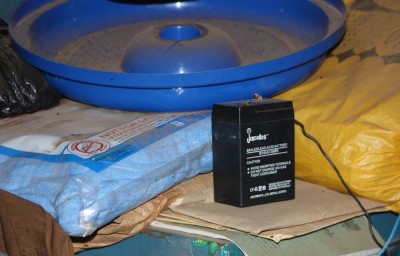Four Things to Consider When Designing Small Solar Systems for Africa
If you are preparing to launch a solar lighting product in sub-Sahara Africa, especially Kenya, here are four things to consider based on my observations in Eastern Kenya earlier this year. No citations here, no scientific data just my thoughts.
- Tradeoffs will happen. Be on the right end of the tradeoff when it does. Usually these tradeoffs are not just price versus features but new thingymajigy vs status quo. Despite the trouble with kerosene, most consumers know how to cope with it. Save the customer time or money and you will be on the better side of the tradeoff. Time in getting a job done or money that is spent as a consequence of the existing solution (medical bills for children studying by kerosene lamps, burns, continued purchase of kerosene etc). If the payoff from your solar solution appears to require a long wait, you may already be on the wrong end of the tradeoff. Find a different benefit to present.
- Aspirations exist. Customers purchasing their first solar lighting product are moving up from kerosene to something cheaper to run. However, once they light up their house they begin to plan for the next electricity consuming device. A bigger radio and a television rank fairly high on the list of these customers. If your product can scale up with them to a point on that journey, they won’t feel they will have to write it off when they are ready for something bigger. Panels that form an array, charge controllers that can be replaced with bigger ones, the option to add batteries…these are some of the ways you can plugin to the customer’s aspirations and grow with them. A point to note; solar home system users in off-grid locations consider a grid connection once it becomes available despite the obvious cost benefit of solar power. A grid connection is considered a step up.
- Price isn’t everything. People like to show off their latest acquisitions, especially when these acquisitions translate into improved perceptions of their social status by their own peers. If your product is known for being cheap, that erodes the ‘brag-abilty‘ of it. Nokia mobile phones were very popular in the slums of Kibera despite not being the cheapest.
- Be part of an ecosystem. While showing off a solar product to residents of rural towns in Kenya earlier this year, they repeatedly asked what they would do with it if it needed repair. Because it features an LED light with integrated power storage, they immediately began asking how it would work with regular solar bulbs or readily available alternatives. They complained the panel was too small (they hesitated to classify it as a solar solution) and it worked with nothing else they that is readily available at their local electronics stores. Any one of those issues was a deal breaker. Play nice with others in the ecosystem and that includes other LED lights, batteries and fundis (local skilled technicians).
It seems to me that any firm selling a 5w-10w panel + 12v 60AH (or more) battery + easily available bulb is on the right path. Now if the solution allows additional panels to be integrated, a charge controller added and bigger batteries plugged in, you have a winner.
Tweet
Related posts:
